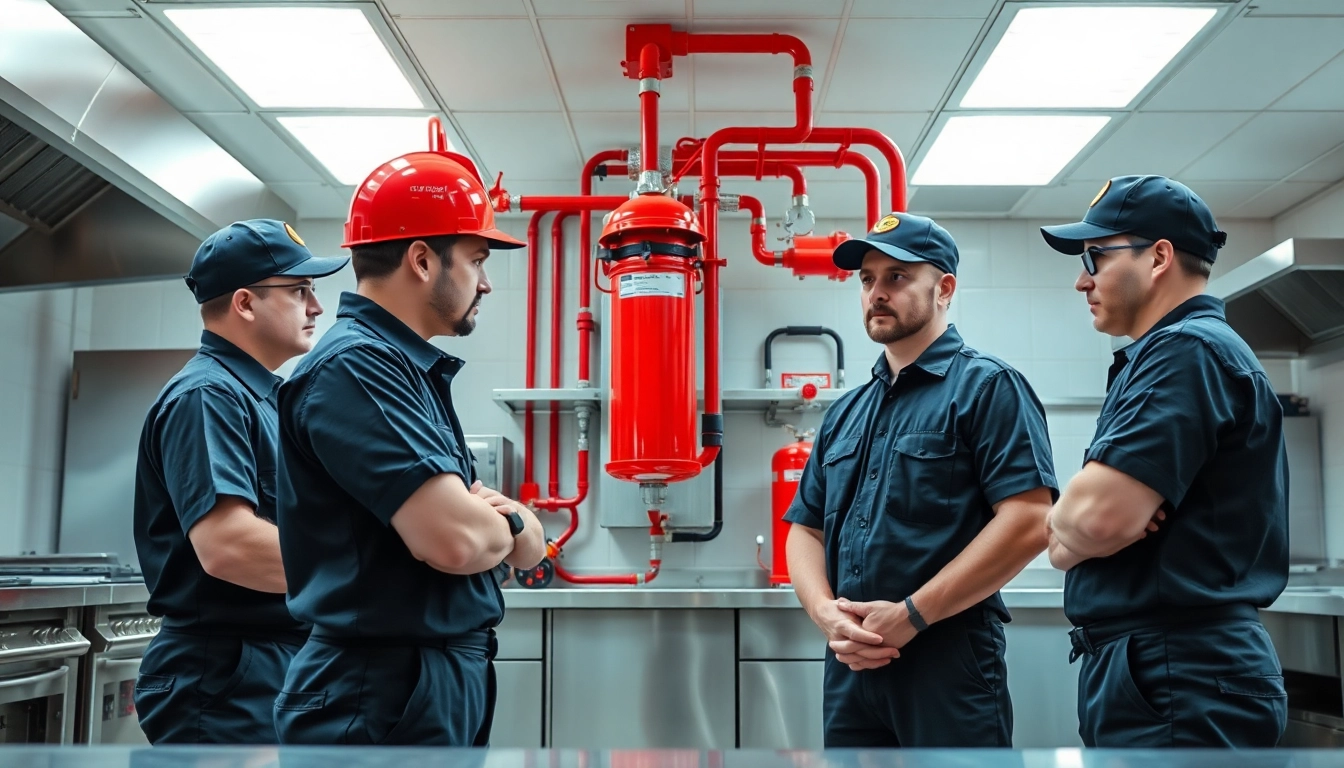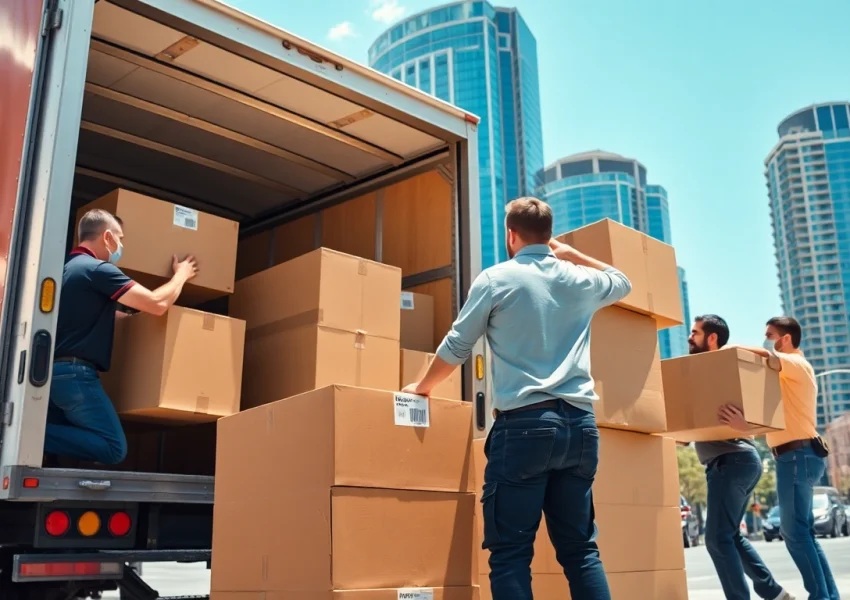Understanding Fire Suppression Service
What is Fire Suppression Service?
Fire Suppression service refers to the comprehensive measures taken to control and extinguish fires, particularly in commercial settings, such as kitchens and warehouses. This service is designed to protect both life and property by implementing systems that can immediately detect and extinguish flames before they cause significant damage. It involves various technologies, including fire extinguishers, automatic sprinkler systems, and specially designed suppression agents, like foams and chemicals, tailored to the environment where they are used.
The Importance of Fire Suppression Service
Fire incidents can lead to catastrophic losses. The importance of a reliable Fire Suppression service cannot be overstated, particularly in commercial kitchens, where the risk of fire is heightened due to cooking appliances and flammable materials. Effective fire suppression systems not only save lives but also minimize property damage and ensure business continuity. Implementing these systems can have significant implications for insurance premiums and can be a vital regulatory requirement, depending on local laws.
Regulatory Standards for Fire Suppression Service
Fire suppression services must adhere to various regulatory standards, including those set by the National Fire Protection Association (NFPA) and specific local fire codes. These regulations dictate the types of fire suppression systems suitable for different environments. For instance, commercial kitchens often require automatic wet chemical systems to comply with NFPA 96, which governs the use of extinguishing systems in cooking environments. Regular updates to these codes signify the need for ongoing compliance, which is crucial for both safety and legality.
Types of Fire Suppression Systems
Wet Chemical Systems in Fire Suppression Service
Wet chemical systems are highly efficient for suppressing fires caused by cooking oils and fats. These systems deploy agents that react with the burning oil to form a soap-like substance that smothers the fire. They are especially critical in commercial kitchens, where grease fires are a significant hazard. Wet chemical systems are usually installed in kitchen ventilation ducts and hoods, ensuring that any flare-ups are quickly controlled. Regular maintenance and inspection are essential for these systems to function properly and meet safety standards.
Dry Chemical Systems Overview
Dry chemical systems are versatile and effective against various kinds of fires, including those involving flammable liquids and gases. Utilizing a powder-based agent, these systems disrupt the chemical reaction in a fire, effectively extinguishing flames. Dry chemical systems can be automatic or manual, depending on the needs of the facility. Their rapid response time makes them suitable for environments like warehouses or industrial kitchens where diverse hazards may be present.
Water-Based Systems and Their Applications
Water-based fire suppression systems are the most common type used in many industries. They include traditional sprinkler systems and standpipe systems and are effective against Class A fires, which involve ordinary combustibles such as wood, paper, and cloth. Water-based systems are often utilized in office settings, retail spaces, and storage facilities. However, care must be taken to ensure that water-based systems do not interact negatively with other types of materials, particularly in environments where sensitive equipment is present.
Implementing Fire Suppression Service in Your Business
Assessment of Fire Risks
Before implementing a fire suppression service, businesses need to conduct a thorough fire risk assessment. This process involves identifying potential hazards, assessing the likelihood of fire incidents, and evaluating the impact of possible fires on operations. The assessment should consider materials used in the workplace, the layout of the facility, and the heating and cooking equipment involved. An effective risk assessment will guide the selection of appropriate fire suppression strategies and systems.
Choosing the Right Fire Suppression Service Provider
Selecting a qualified fire suppression service provider is crucial for ensuring effective installation and maintenance of systems. When assessing potential providers, businesses should consider their experience, certifications, and reputation within the industry. It is advisable to seek providers who offer a comprehensive range of services, including risk assessments, installation, maintenance, and emergency support. Engaging with providers who understand local regulations and standards can also simplify compliance.
Installation Best Practices
The installation of fire suppression systems should be performed by qualified professionals and must follow all relevant guidelines and regulations. Installing systems involves careful consideration of the specific hazards present in the environment. Proper placement of the devices is essential to maximize their effectiveness. For instance, in a commercial kitchen, wet chemical systems must be positioned around cooking equipment and hoods to ensure immediate activation in the event of a fire. Additionally, it is vital to maintain accessibility for routine inspections and maintenance.
Maintenance and Inspection of Fire Suppression Systems
Regular Maintenance Tasks for Fire Suppression Service
Routine maintenance of fire suppression systems is essential to ensure they function effectively when needed. Regular tasks typically include checking the pressure levels in gas cylinders, testing fire alarms, inspecting detection systems, and cleaning filters and hoods in commercial kitchens. Documentation of maintenance activities should be maintained to ensure compliance with regulations and provide proof of upkeep during inspections.
Common Issues and How to Address Them
Common issues that may arise with fire suppression systems include leaks in gas lines, blocked sprinkler heads, or malfunctioning alarms. Regular inspection schedules can help identify these problems early on, reducing the risk of system failure during an emergency. Establishing a clear protocol for addressing issues—such as having a dedicated team for maintaining equipment and a response plan for emergency situations—can mitigate risks and ensure that problems are dealt with promptly.
Importance of Routine Inspections
Routine inspections of fire suppression systems are a critical safety measure that cannot be overlooked. Inspections ensure that all components are functioning correctly and that the system is ready to respond in the event of a fire. Most fire codes require scheduled inspections at least once or twice a year, depending on the type of business and the specific systems in use. Regular checks not only maintain safety but can also extend the life of the system components, ultimately protecting the investment made by the business.
Evaluating the Efficiency of Fire Suppression Service
Performance Metrics for Fire Suppression Systems
Evaluating the performance of fire suppression systems is key to determining their effectiveness. Key metrics include response time, reliability of activations, and the coverage area of the system. For instance, the time taken from detection of a fire to activation of the suppression system should be as short as possible to minimize potential damage. Regular drills and system tests can help gather data on these performance metrics, allowing businesses to adapt and improve their fire safety strategies.
Training Staff on Fire Suppression Service
Staff training plays a vital role in fire safety and effectiveness of fire suppression systems. Employees should be trained on how to operate fire suppression equipment, recognize fire hazards, and respond in the event of a fire. Regular training sessions can reinforce the importance of fire safety and ensure that employees know their roles in emergency situations. This preparation can significantly reduce panic and enhance safety outcomes during actual emergencies.
Upgrading Fire Suppression Systems for New Challenges
As businesses evolve, so do their fire suppression needs. Upgrading fire suppression systems to meet new challenges is essential for maintaining safety in a changing environment. Factors that may necessitate upgrades include renovations, changes in operations, or the introduction of new equipment that poses different fire risks. Staying informed about advancements in fire suppression technology can help organizations make timely decisions to enhance their safety measures.






